See it in action here in comparison to other flashlights:
And the morse function:
The light can be seen from a very wide area and is great for morsing through the night.
A monster flashlight containing a 100W 8500Lm led with big heatsinks and batteries.
With morse function to tell the night goodbye.
To make the experience fit your profile, pick a username and tell us what interests you.
We found and based on your interests.
See it in action here in comparison to other flashlights:
And the morse function:
The light can be seen from a very wide area and is great for morsing through the night.
It was about time i revisited this project.
The boost converter i had initially was a beefy "600W" part that seemed like a good idea back then but only runs good at around 17V+. No chance at 12V to get full output power.
So i got a new "250W" one that claims to run down to 9V, bolted to an old pentium 3 heatsink and tested it at 12V. It draws about 14A at 12V which is way over the claimed 10A it is capable of but with some added output capacitance and overkill cooling i see no issues. Should be completely fine at higher voltages and even at 12V it achieves maximum output power :)
To do something useful with the arduino in this project i added a morse function to tell the night what you think about it ;)
It will send any text that is received via serial and return to normal brightness afterwards:
It is possible to put the light and a raspberry pi anywhere and send messages over the internet into the darkness.
Got the potentiometer and some high quality banana terminals fixed to the case.
A lipo can be connected safe and everything works at high power.
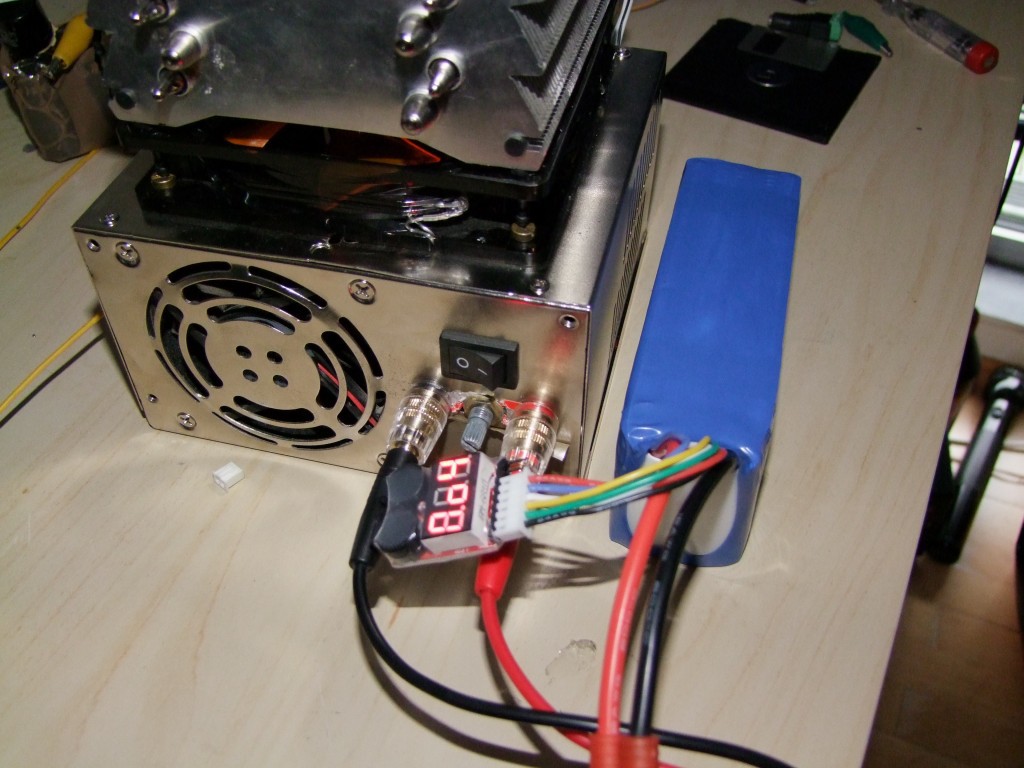
Video will follow soon.
Next step: Video and maybe a strobe mode and a pushbutton.
Almost all components are now stuffed into the case. Still looks awful but works great.
Cooling and PWM control are working fine.
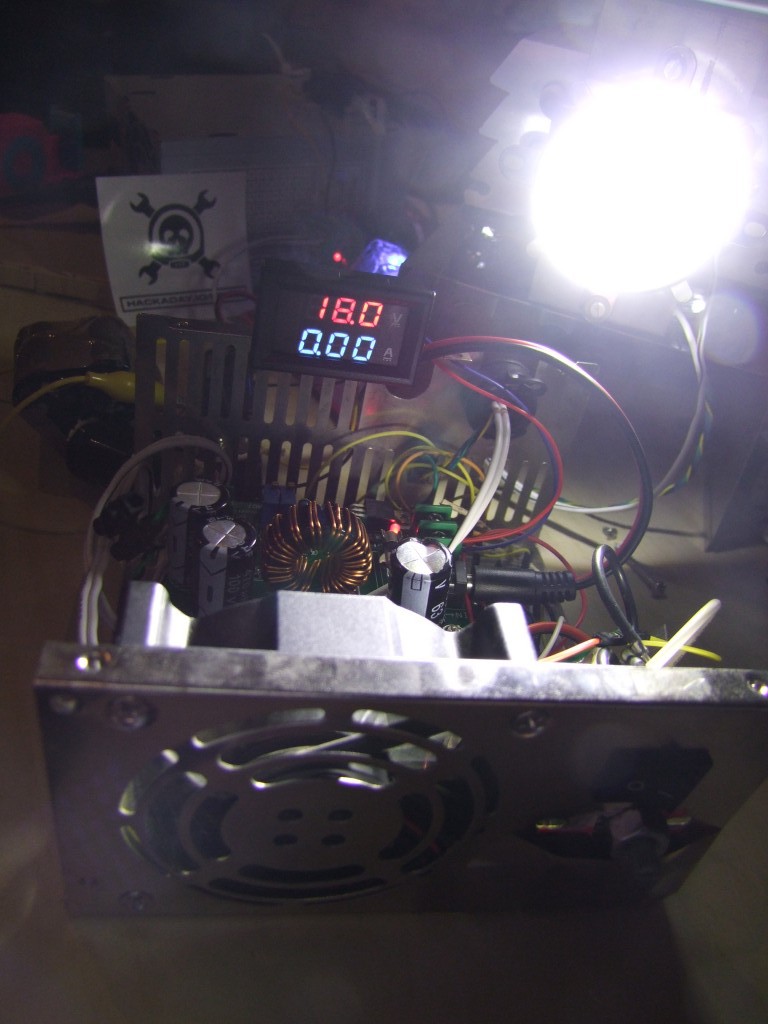
Next steps: cleaner wiring, making use of the switch and screwing banana plugs for power in and replacing the old power socket with the volt/amp meter.
Some minutes ago the new 600w constant current boost converter arrived.
Sadly some capacitors were damaged and broken off the board. duh. what a mess. Bent in all directons.
This is how it arrived:
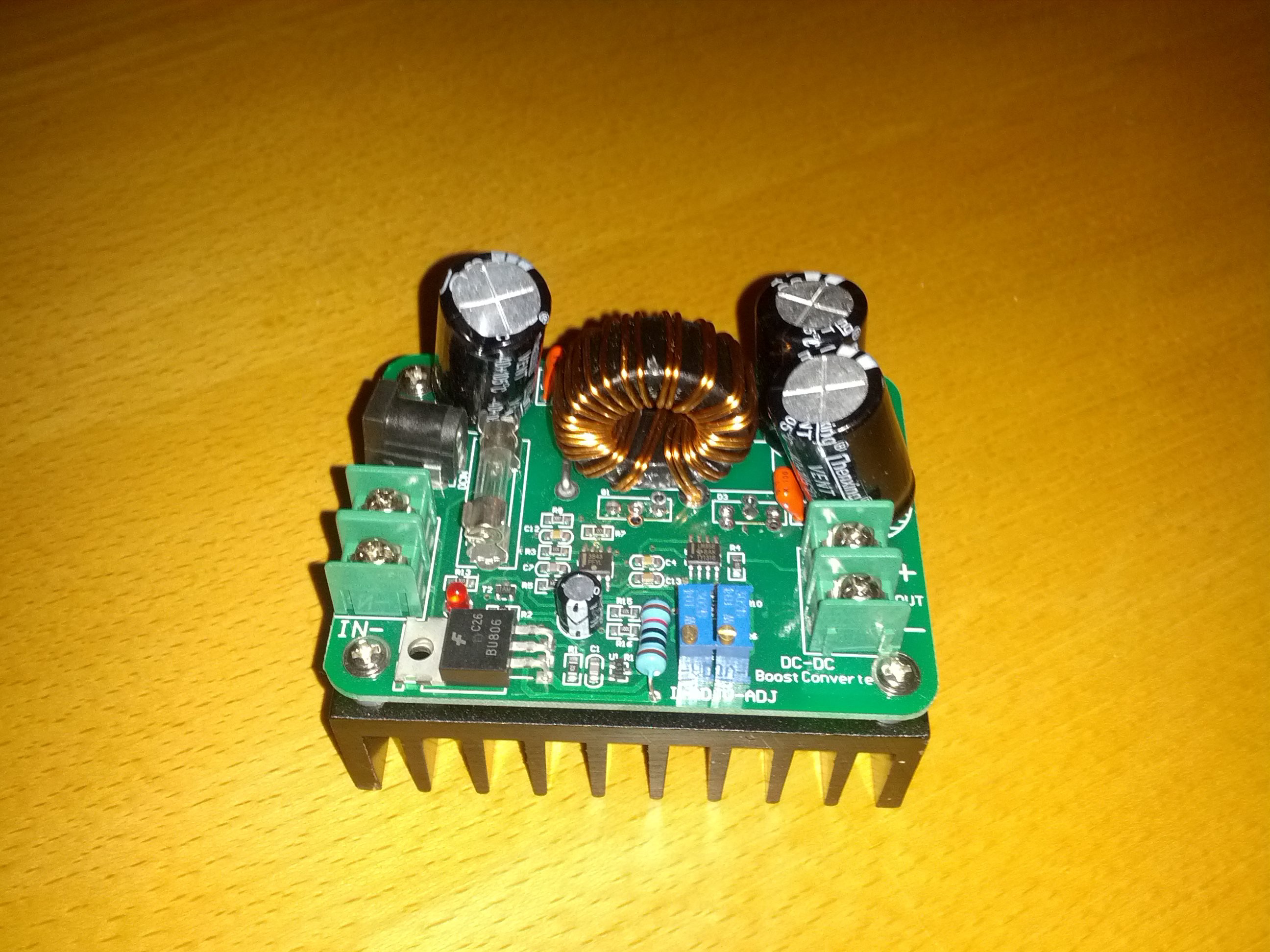
Managed to solder them back on and they seem to work fine. (not exploded in my face :P)
Constant current is set to 3,2A and maximum Voltage to around 35v as there is a drop in the wires and the pwm mosfet.
The booster has only two transistors but three holes in the heatsink so i screwed my mosfet onto the heatsink.
I can now control the brightness with an arduino and a potentiometer. The arduino will do a fade if the pot is turned fast and i want some kind of exponential curve as the high settings have almost no change and the first values with high brightness changes are very close to each other on the pot.
Found a good heatsink and got almost all components.
Still waiting for some boost converters from china.
The led was first secured by wood.
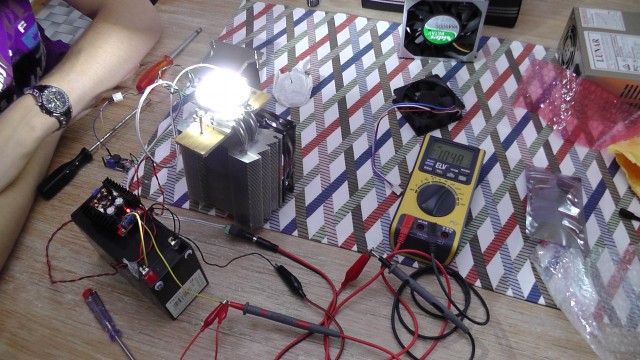
Now i am using alu plates and long screws.
Everything holds together and won't fall apart anymore ;)
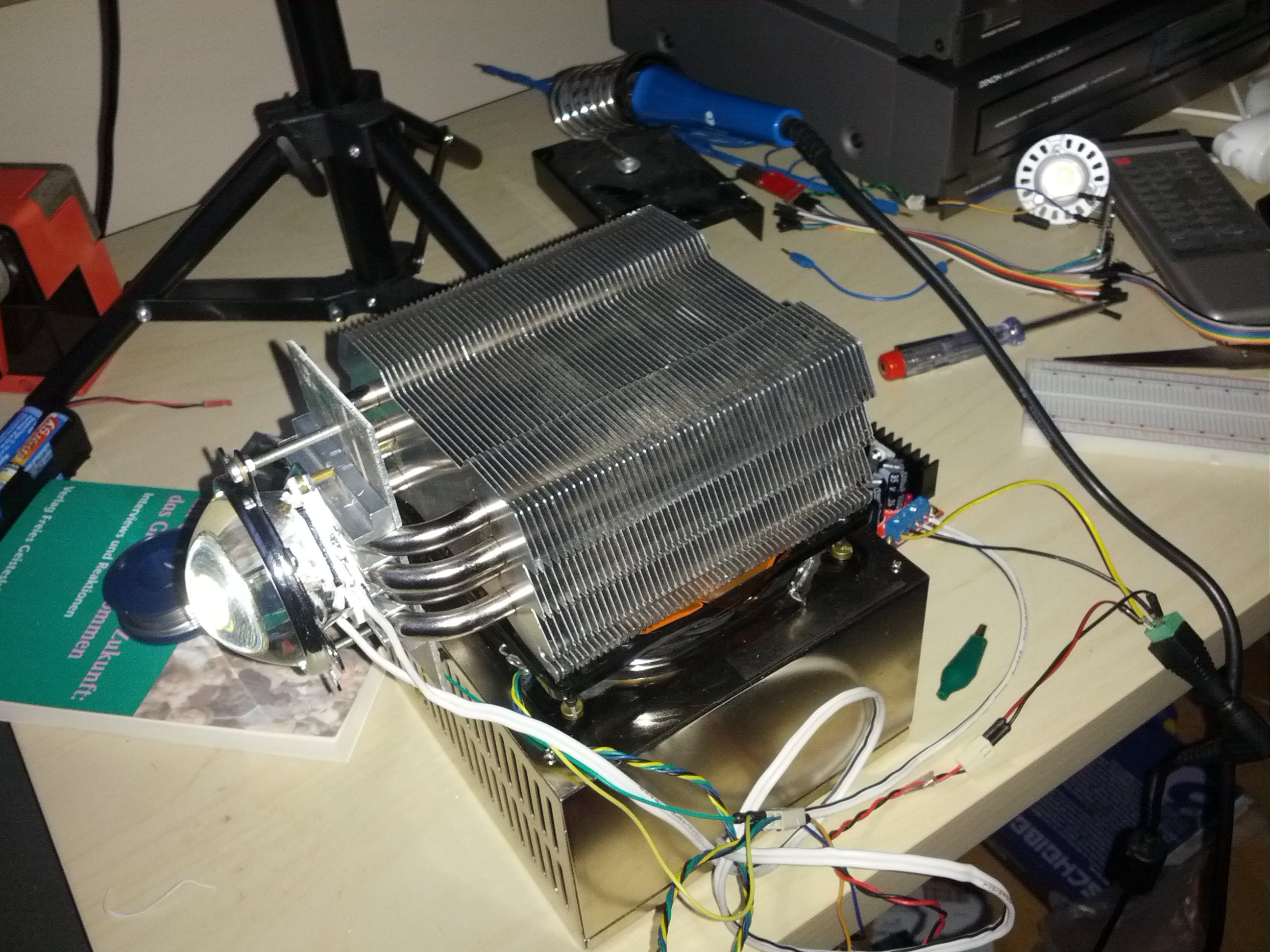
Next step: waiting for the better boost converter to arrive and connect a lipo.
Create an account to leave a comment. Already have an account? Log In.
Yes. I would also want to use current based dimming instead of pwm.
The reason i threw the arduino is was that i wanted to make some measurements like temperature, current, voltage and drive a display but i never got the motivation for that.
To reduce the pwm problems i increased the frequency so it won't be as bad on videos. But it is not that easy to regulate the boost converter with the arduino.
The easiest way would be to wire the pot with some resistors directly to the converter. Sure. But i am happy for now.
Become a member to follow this project and never miss any updates
I wondered about the arduino, because for dimming I would just use a pot and adjust the constant current. It is not that great to PWM the LED current itself. This gives flicker (depending on frequency) and reduces efficiency. The efficiency of LEDs goes down with higher current. Therefore the overall efficiency goes down if you use high current pulses with pauses in between for dimming. It's true, that it is often done this way, but just out of convenience. You have a real switch mode converter, so you can drive it with DC.